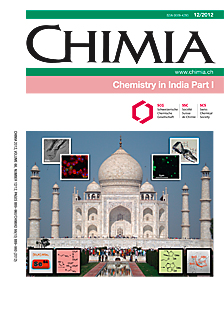Peptide-based Synthetic Design, Construction and Morphology of Soft Structures
DOI:
https://doi.org/10.2533/chimia.2012.930Keywords:
Carbohydrates, Fibers, Peptide conjugates, Scaffolds, Self-assembly, VesiclesAbstract
Peptide-based self-assembly offers a unique entry into the construction of soft structures with interesting material properties and functions. Aromatic amino acid-containing peptides are commonly employed as they exhibit high propensity to aggregate due to increased hydrophobic content, promotion of favorable secondary structures, planarity and the possibility of ?–? interactions. Incorporation of covalent scaffolds, stimuli-responsive handles and carbohydrate moieties augment beneficial characteristics to the resulting peptide conjugates. These modifications were shown to enforce self-association, elicit stimuli response and achieve improved hydrophilic properties, to name but a few.Downloads
Published
2012-12-19
Issue
Section
Scientific Articles
License
Copyright (c) 2012 Swiss Chemical Society

This work is licensed under a Creative Commons Attribution-NonCommercial 4.0 International License.
How to Cite
[1]
Chimia 2012, 66, 930, DOI: 10.2533/chimia.2012.930.







